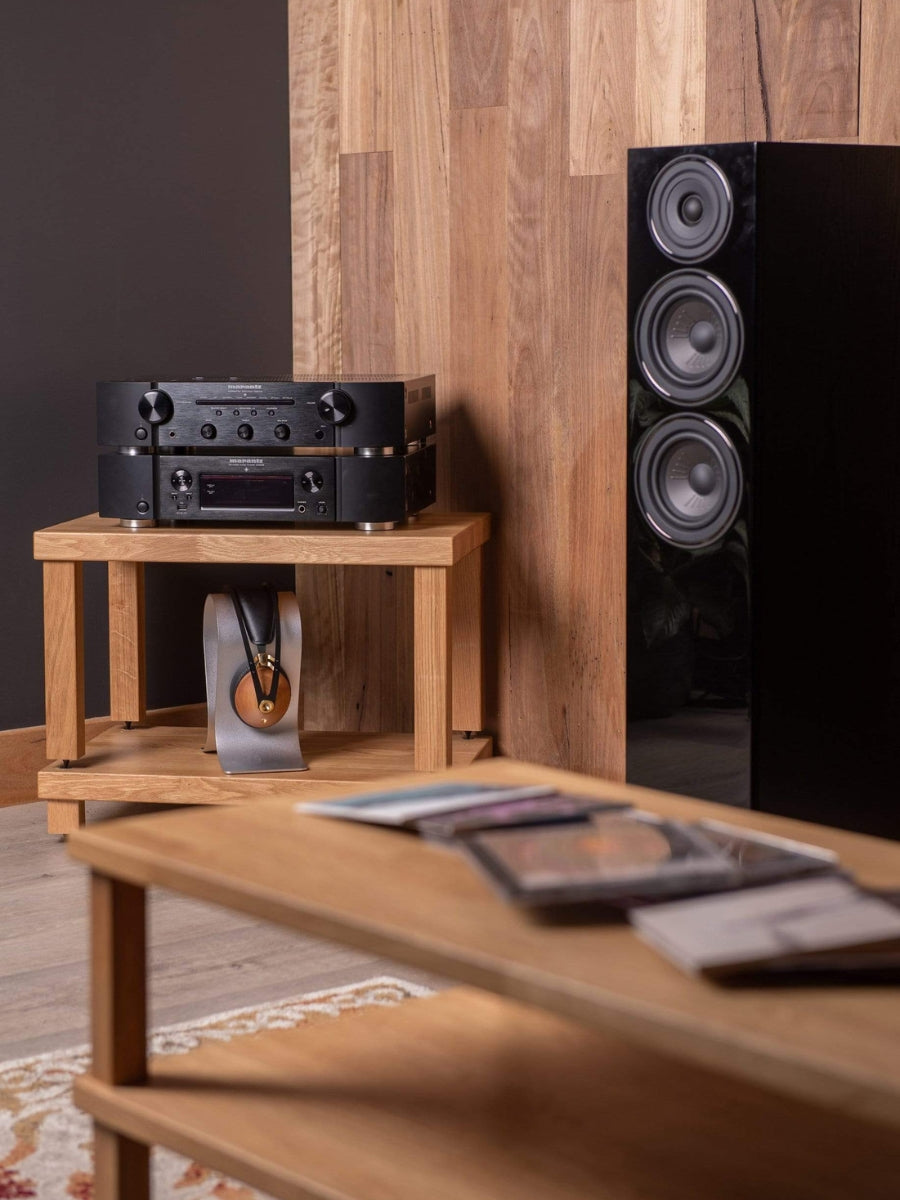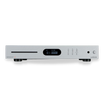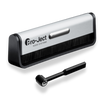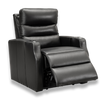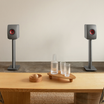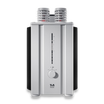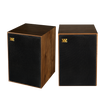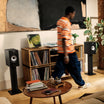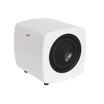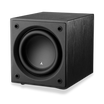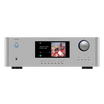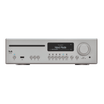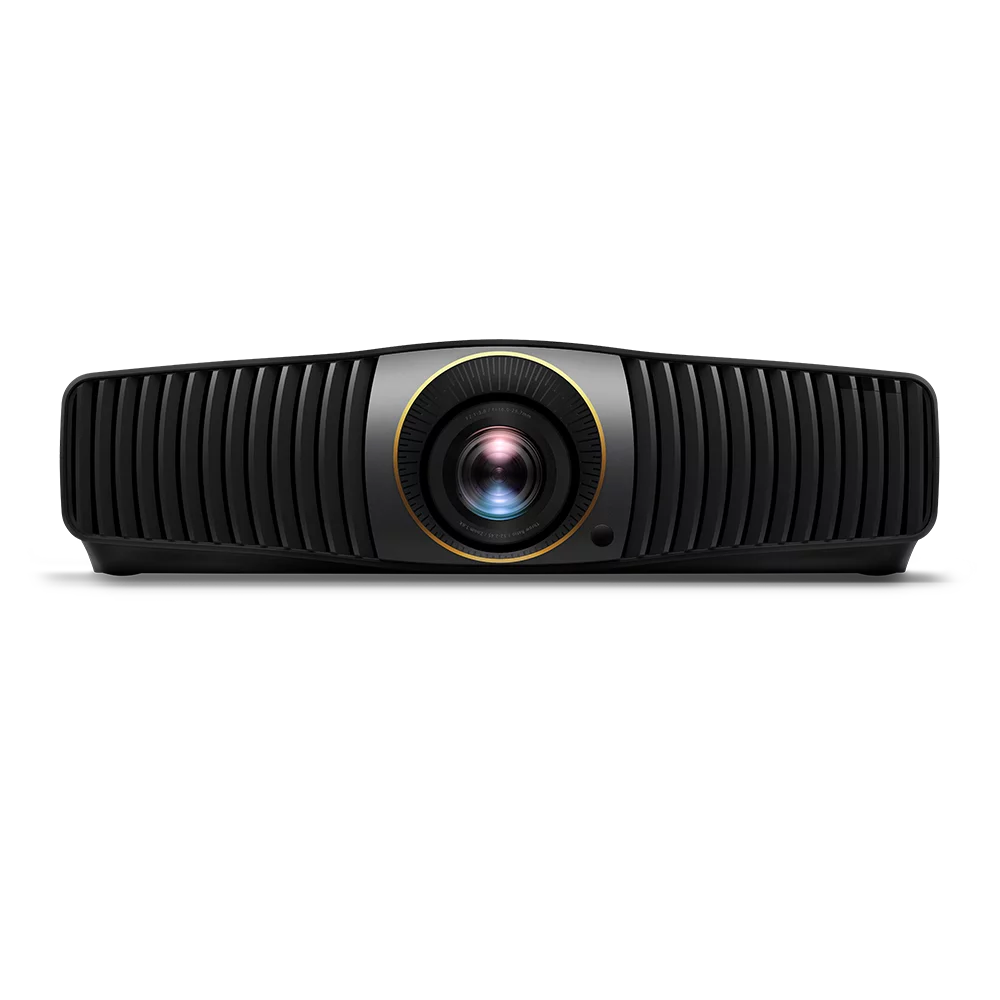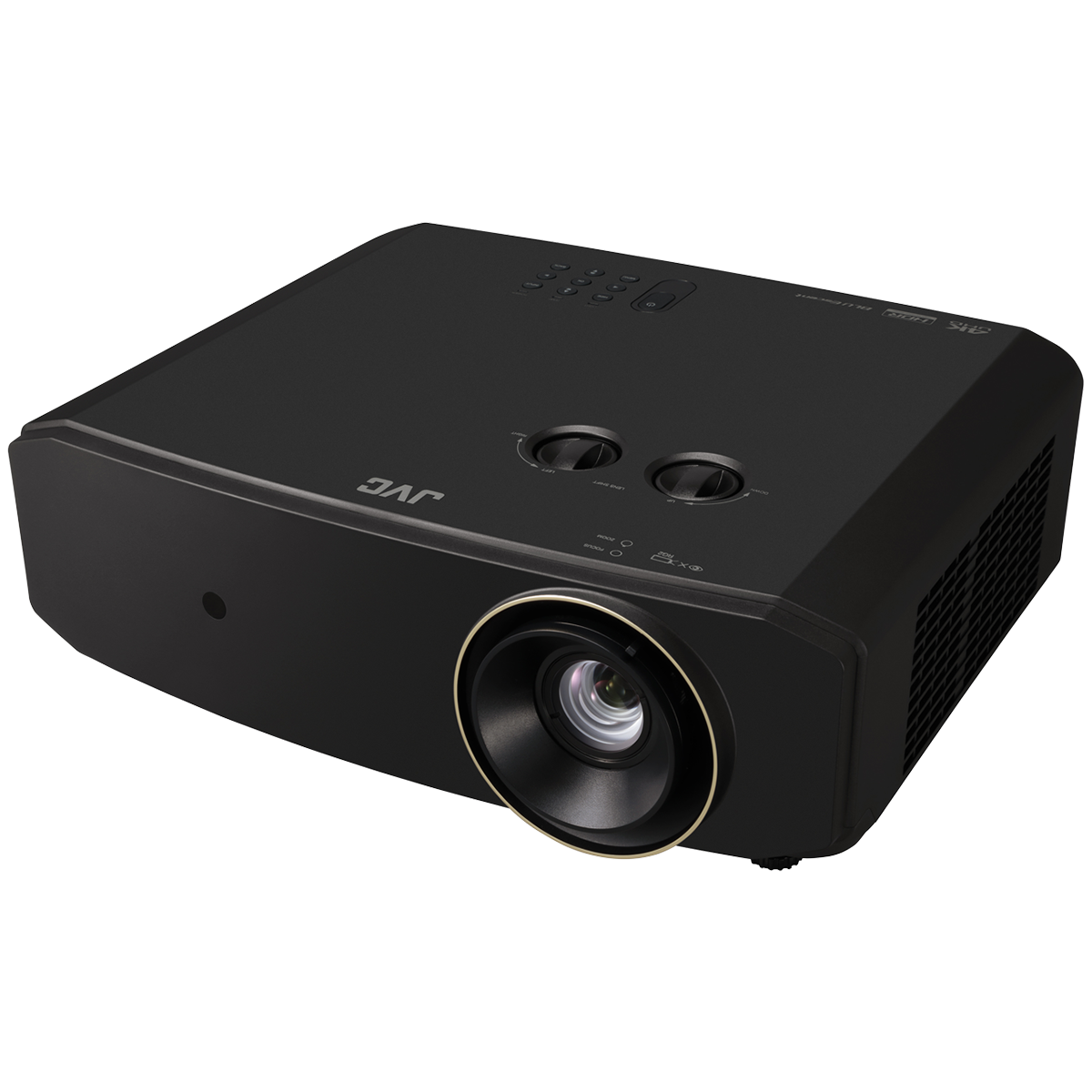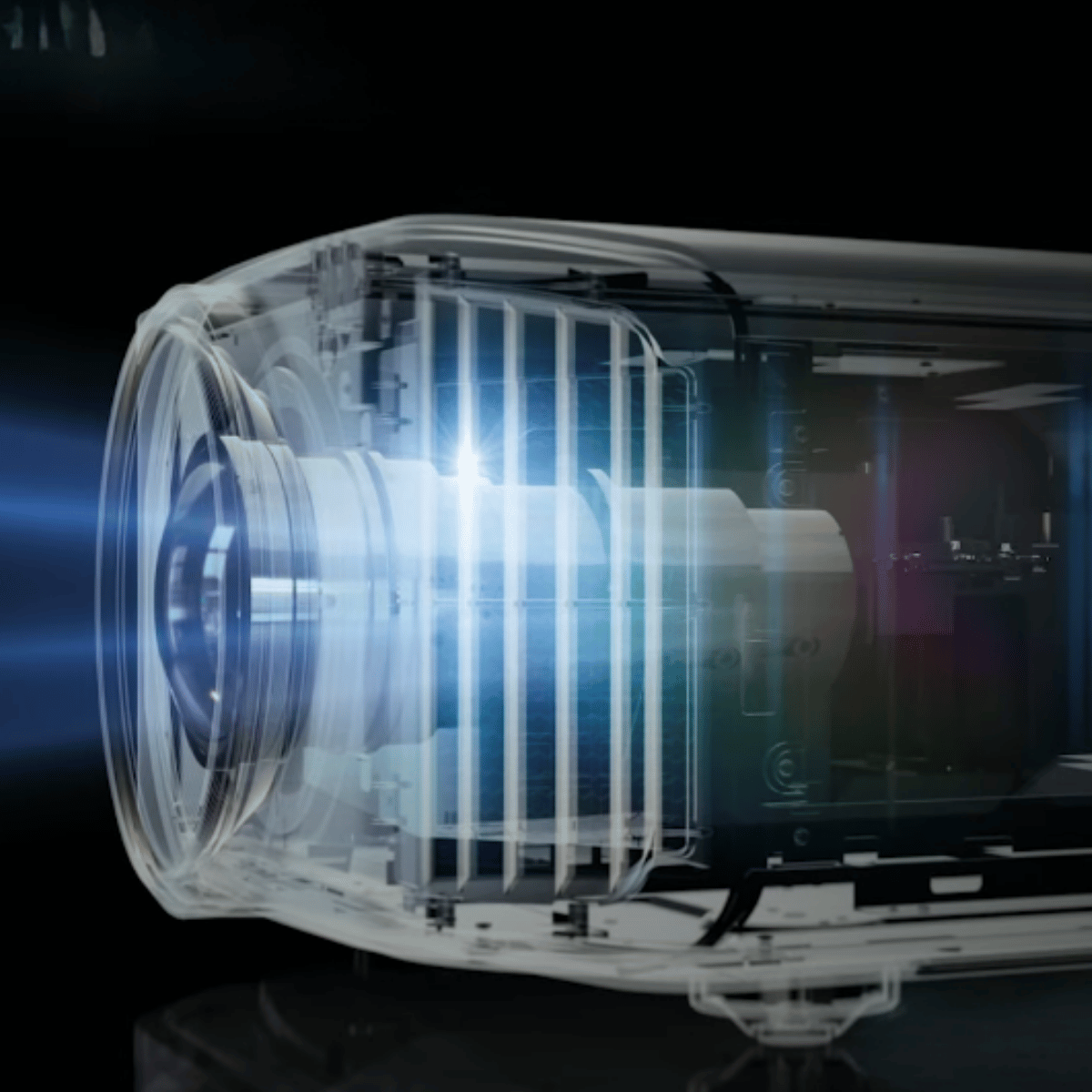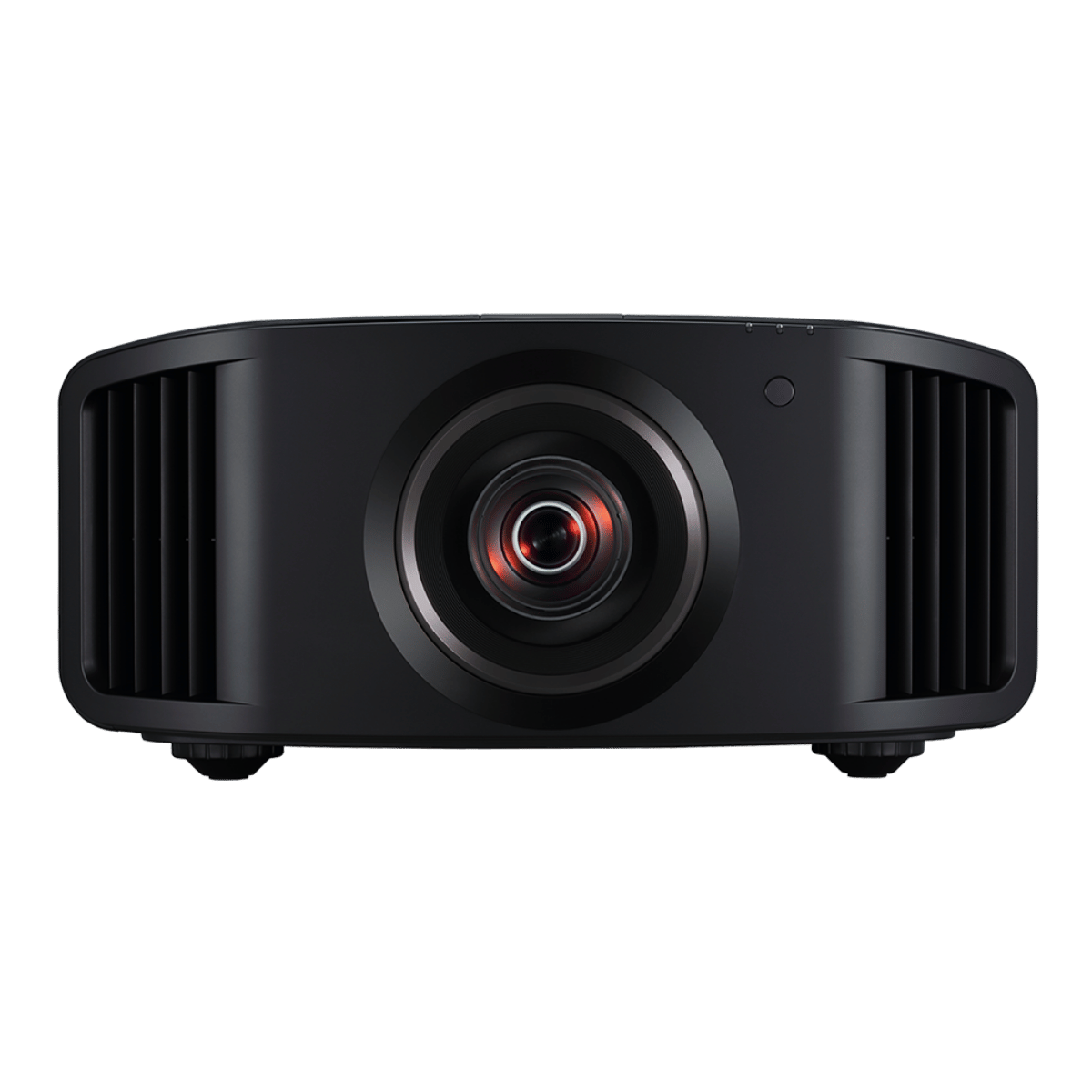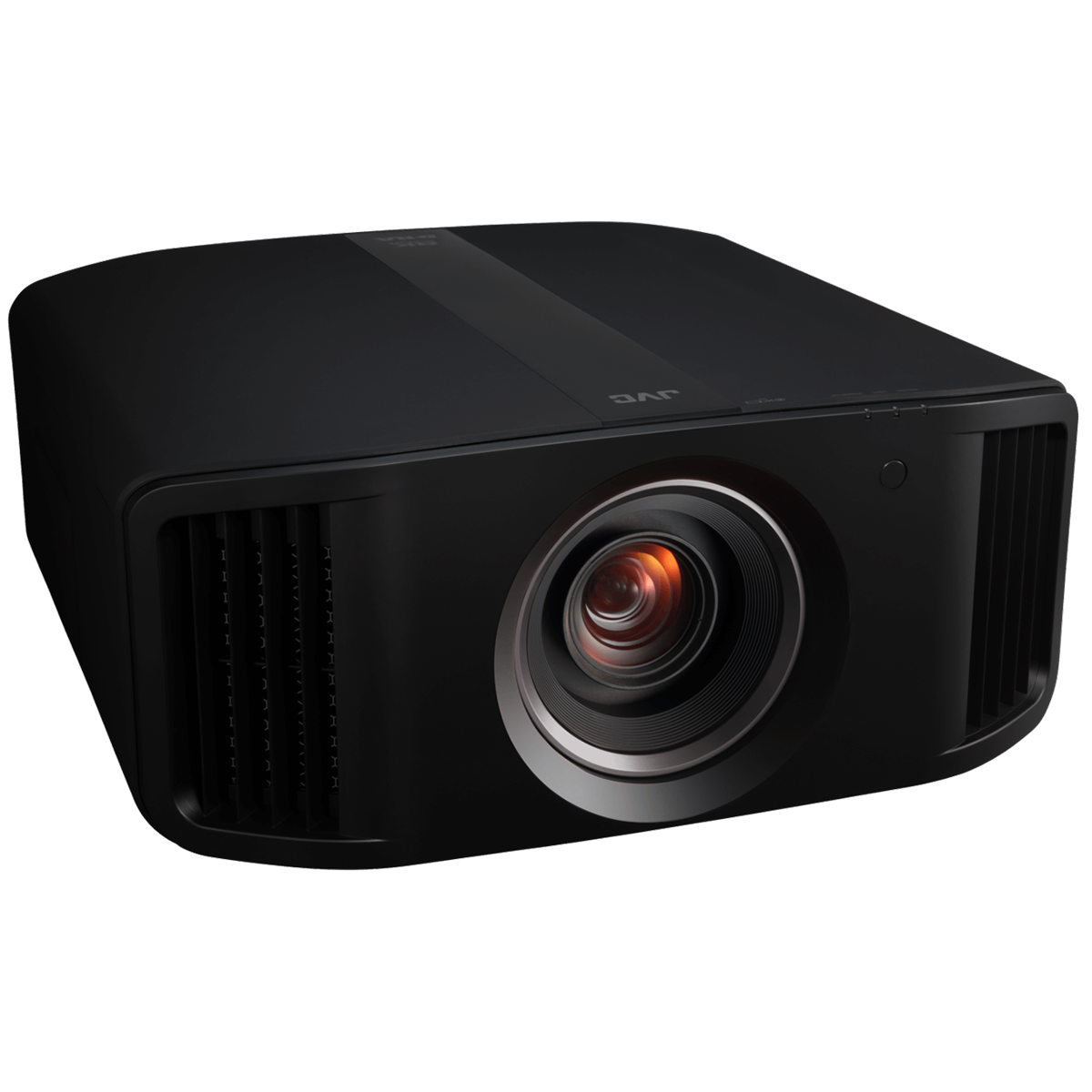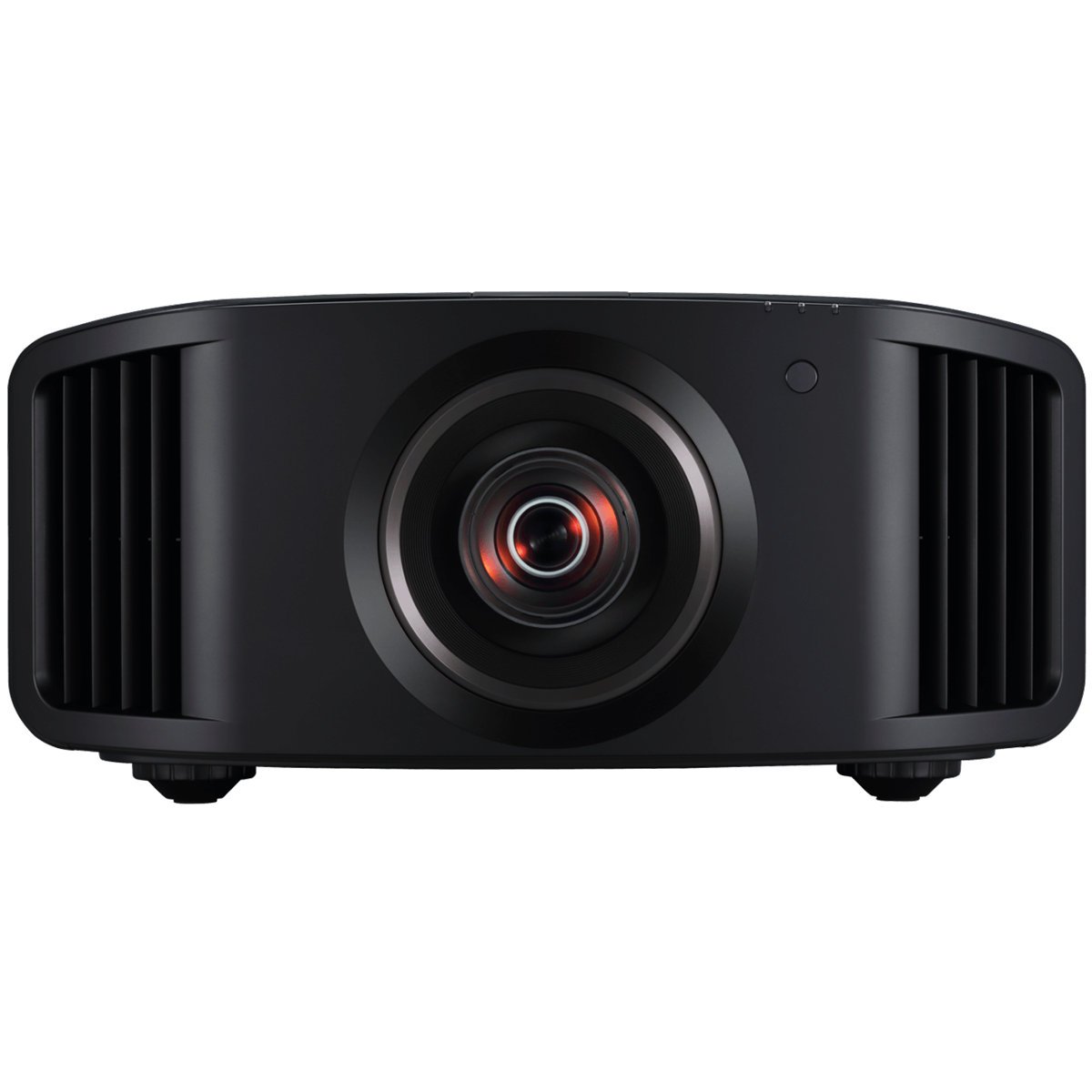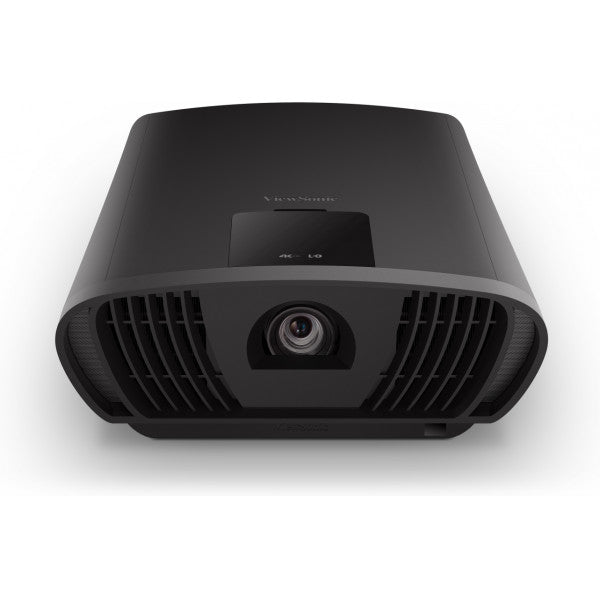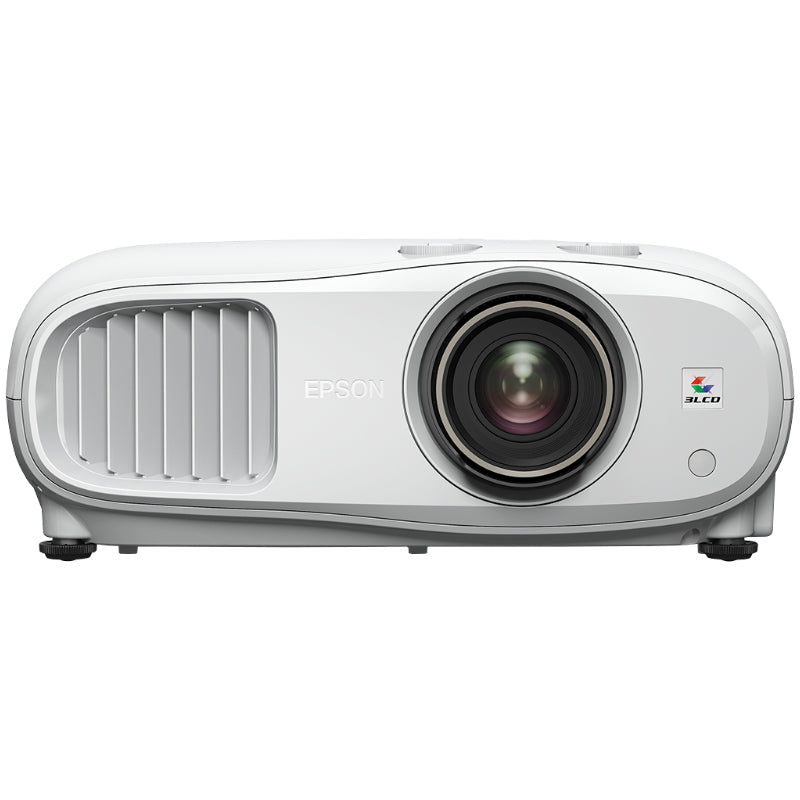

Cinema & Home Theatre Projectors
Filters
26 products
TELL ME MORE ABOUT
Cinema & Home Theatre Projectors
Home theatre projectors are essential for those seeking an expansive and immersive viewing experience in their own... Read More
Home theatre projectors are essential for those seeking an expansive and immersive viewing experience in their own space. These devices, central to any home cinema setup, project large-scale images, offering a more engaging and impactful visual experience than traditional TVs. When choosing a projector, considerations include the type of projection technology, image quality, and the environment in which it will be used. The right projector can transform any room into a mini-cinema, providing a cornerstone for home entertainment. Understanding the basics of projector technology and its application in a home setting is key to enhancing your viewing experience.
Introduction to Home Theatre Projectors & Key Features
Home theatre projectors are a cornerstone of modern home entertainment, offering an immersive viewing experience that rivals traditional cinema. These devices project images onto a screen or a flat surface, transforming any room into a personal movie theatre. When considering a home theatre projector, several key features are crucial:
-
Resolution: This determines the clarity and detail of the image. Common resolutions include 1080p (Full HD) and 4K, with 4K providing a sharper and more detailed picture.
-
Brightness: Measured in lumens, brightness is essential for visibility, especially in rooms with ambient light. Higher lumens mean a brighter image, which is crucial in well-lit environments.
-
Contrast Ratio: This refers to the difference between the darkest black and the brightest white the projector can display. A higher contrast ratio means deeper blacks and more vibrant colours, enhancing the overall picture quality.
-
Projection Technology: The main types are DLP (Digital Light Processing), LCD (Liquid Crystal Display), and LED (Light Emitting Diode). Each has its advantages, with DLP known for sharp images, LCD for bright colours, and LED for longer life and lower power consumption.
-
Connectivity: Modern projectors offer various connectivity options, including HDMI, USB, and sometimes wireless connections, allowing them to interface with multiple devices like Blu-ray players, gaming consoles, and streaming devices.
-
Throw Distance and Lens Shift: These determine the projector's placement relative to the screen. Short-throw projectors are designed for small spaces, while lens shift offers flexibility in positioning the projector.
Understanding these features is vital in choosing a projector that not only fits your space but also enhances your viewing experience. Whether you're watching movies, playing video games, or streaming your favourite series, the right home theatre projector can significantly elevate your entertainment experience.
Selecting the Ideal Projector for Your Space
Choosing the right home theatre projector involves more than just technical specifications; it requires considering the unique characteristics of your viewing environment. Here are key factors to guide your selection:
-
Room Size and Layout: The size and shape of your room influence the projector's throw distance and the size of the screen you can accommodate. Measure your space to ensure the projector fits and delivers the desired image size.
-
Ambient Light: Rooms with a lot of natural or artificial light need projectors with higher brightness (lumens) to combat glare and maintain image quality. For darker rooms, projectors with lower brightness are sufficient.
-
Screen Type: While some projectors work well with a plain wall, investing in a dedicated projector screen can significantly enhance image quality. Consider the screen's material and gain (reflectivity) based on your projector's brightness and viewing angle.
-
Seating Arrangement: Your seating position relative to the screen affects the viewing experience. Ensure the projector's image size is appropriate for the viewing distance, following the THX recommendation of a viewing angle of 40 degrees for an immersive experience.
-
Audio Integration: Consider how the projector will integrate with your existing audio setup. Some projectors include built-in speakers, but for a true home theatre experience, external sound systems or soundbars offer superior audio quality.
-
Ease of Installation and Adjustment: Look for features like keystone correction and lens shift for easy alignment of the image with your screen. Also, consider the ease of installation and whether you'll need professional help to set it up.
By taking these factors into account, you can select a projector that not only fits your technical requirements but also complements your home environment, ensuring a satisfying home theatre experience.
Understanding Projector Technologies: DLP, LCD, and LED
When delving into home theatre projectors, it's essential to understand the different projection technologies available, as each offers unique benefits and characteristics. The three primary types are DLP (Digital Light Processing), LCD (Liquid Crystal Display), and LED (Light Emitting Diode).
-
DLP Projectors: Known for their sharp images and reliability, DLP projectors use a chip made of tiny mirrors and a spinning colour wheel to create images. They are particularly favoured for their high contrast ratios, minimal gap between pixels, and smoother motion, making them ideal for fast-paced movies and gaming.
-
LCD Projectors: These projectors use liquid crystal displays to create images. They are recognized for producing vibrant colours, impressive brightness levels, and better energy efficiency. LCD projectors are often chosen for their natural colour reproduction, making them suitable for a variety of content, including movies and presentations.
-
LED Projectors: LED projectors utilize light-emitting diodes for illumination, offering a longer lifespan and lower power consumption compared to traditional lamp-based projectors. They are known for their compact size, less heat generation, and consistent colour performance over time. While they may not be as bright as DLP or LCD projectors, they are excellent for prolonged use and portable applications.
Each technology has its strengths and weaknesses, and the choice often depends on your specific needs and preferences. DLP is great for overall picture quality and motion clarity, LCD excels in colour vibrancy and brightness, and LED stands out in lifespan and energy efficiency. Understanding these differences can help you make an informed decision that aligns with your home theatre goals.
Selecting the Right Projector: From Budget to Premium Options
Choosing the right projector for your home theatre involves balancing budget constraints with desired features and performance. Here’s a guide to help you navigate from budget-friendly to premium options:
-
Budget Projectors: Ideal for casual viewers or those setting up their first home theatre. These projectors often have lower resolutions like 720p or 1080p but can still offer decent picture quality. They may lack advanced features like lens shift or 3D capabilities, but they are great for occasional movie nights or gaming.
-
Mid-Range Projectors: These offer a balance between cost and performance. Expect higher resolutions, such as 1080p or 4K UHD, better brightness, and improved colour accuracy. Mid-range projectors may include features like built-in speakers, moderate contrast ratios, and some form of 3D support.
-
High-End Projectors: Targeted at serious home theatre enthusiasts. These projectors boast top-tier resolutions (4K or even 8K), high brightness levels, exceptional contrast ratios, and superior colour accuracy. They often include features like advanced lens shift, zoom capabilities, and support for various HDR formats. High-end projectors are designed for dedicated home theatre rooms where control over lighting and sound is optimized.
-
Premium Options: The pinnacle of home theatre projectors, offering cutting-edge technology like laser light sources for extended longevity, ultra-high contrast ratios, and features like High Frame Rate (HFR) support. These projectors are for those who want a no-compromise home cinema experience and are willing to invest significantly.
-
Special Features: Depending on your needs, consider additional features like short-throw projectors for small spaces, wireless connectivity, or built-in streaming services.
-
Compatibility and Connectivity: Ensure the projector has the necessary inputs for your devices, such as HDMI, USB, or even wireless casting options. Compatibility with your existing sound system and other home theatre components is crucial.
-
Future-Proofing: Consider the longevity of your projector. With technology rapidly evolving, opting for a projector with 4K resolution and HDR support might be a wise choice, even if you don't currently have 4K sources.
Selecting the right projector depends on your budget, the features you value most, and the kind of home theatre experience you aspire to create. Whether it’s a budget-friendly model for casual viewing or a premium projector for a high-end home cinema, there’s a projector to suit every need and space.
Final Thoughts
In the realm of home theatre projectors, the choices are as varied as the needs and preferences of the users. From budget-friendly models perfect for casual viewing to premium, high-end projectors designed for the ultimate home cinema experience, there's a projector to fit every room, purpose, and budget. The key is to assess your specific needs, considering factors like room size, ambient light, and desired features, such as resolution, brightness, and connectivity options.
What is a 4k projector?
A 4k projector is a type of projector that is capable of displaying images and videos at a resolution of 3840 x 2160 pixels, which is four times the resolution of a full HD projector.
What are the benefits of a laser projector?
Laser projectors offer longer lifespans, better colour accuracy, and higher contrast ratios compared to traditional lamp-based projectors. They also provide quicker startup and shutdown times.
What is a short-throw projector?
A short-throw projector is designed to project larger image sizes from a short distance, minimizing the interference of shadows and obstructions in smaller spaces.
What are ANSI lumens in projectors?
ANSI lumens measure the brightness of a projector, indicating how much light it can produce. The higher the ANSI lumens, the brighter the projector.
How do I choose the best home theatre projector?
Consider factors such as resolution (e.g. 4k), brightness (lumens), throw distance, contrast ratio, and connectivity options when choosing the best home theatre projector for your setup.
What is a smart projector?
A smart projector refers to a projector that has built-in internet connectivity and can run apps, stream content, and integrate with other smart devices for added functionality.
NEED MORE GUIDANCE?
We are here to help
Check out some of our most commonly asked questions.
What do I need to play records?
Getting into vinyl? That’s awesome! We have some curated turntable Hi-Fi packs, with everything you'll need to get spinning right away. But if you want to build your own, read on for all the details.
First off, you'll need a turntable. It's the star of the show, so make sure it’s in good nick, with a decent cartridge and stylus (needle).
Next, there’s the phono preamp. Some turntables or amplifiers come with one built-in, but if yours doesn’t, you’ll need one as a bridge between your turntable and amplifier or powered speakers.
For the sound output, you’ve got two options. You can go with a traditional setup involving an integrated amplifier to take the signal from your phono preamp and power your passive speakers. Alternatively, you can opt for powered speakers, which have the amplifier built in – a handy all-in-one solution.
Speaking of speakers, good ones are a must for that rich, warm vinyl sound we all love. Whether you go for bookshelf or floorstanding speakers (or powered ones) depends on your space and budget.
And there you go! With these essentials, you’ll be ready to dive into your vinyl collection and enjoy that classic sound.
What can a wireless speaker do?
Wireless speakers are a game-changer for how you enjoy music and audio around the house. First off, they let you stream music wirelessly from your phone, tablet, or computer, so no more messing about with cables. You can easily play tunes from Spotify, Apple Music, Tidal or whatever streaming service you fancy.
If you’re into having music everywhere, many wireless speakers offer multi-room audio. You can sync them up to play the same music in every room or control what plays in each room individually, perfect for parties or just keeping the vibes consistent throughout your home.
Voice control is another brilliant feature. Many come with built-in assistants like Alexa, Google Assistant, or Siri. You can control your music with just your voice, ask for the weather, set reminders, or even control other smart home devices.
Sound quality? These little gadgets often pack a punch, delivering high-quality audio that can rival traditional wired setups. Some even offer 360-degree sound, filling the room with music from every angle.
In a nutshell, wireless speakers bring flexibility, convenience, and top-notch sound to your audio experience, making them a fantastic addition to any home. Whether you’re hosting a party, working from home, or just chilling out, they make listening to music a breeze.
How do you choose the right speaker & amplifier combination?
Deciding on a good speaker and amplifier combination is like putting together a perfect wine and cheese pairing—it’s all about balance and harmony. Here’s a conversational guide to help you through it:
First, consider your speakers. These are your main players, so you want to choose ones that fit your space and listening preferences. If you love deep bass and have a bit of room, floorstanding speakers might be your go-to. For smaller spaces or a more subtle look, bookshelf speakers are fantastic.
Now, onto the amplifier. This is where things get interesting. Your amp needs to match your speakers in terms of power and impedance. Check the wattage ratings on your speakers—your amplifier should provide enough power to drive them properly. Too little power and you’ll be missing out on sound quality; too much, and you risk damaging your speakers.
Next, think about the impedance (measured in ohms). Your amp and speakers should be compatible here too. Most speakers are rated at 8 ohms, but some can be 4 or 6. Make sure your amplifier can handle the impedance of your speakers to avoid any performance issues.
Another important factor is the type of sound you’re after. Some amps are known for their warm, rich tones, while others might be more neutral or even slightly bright. It’s a bit like choosing between a vinyl record and a digital stream or CD —each has its own charm. If possible, listen to different amp and speaker combinations to see what sounds best to your ears.
If purchasing online, note that at LE, we have made recommendations on speaker & amplifier combinations that we think sound wonderful together within each product listing.
Don’t forget about connectivity and features. Modern amplifiers often come with a host of options like Bluetooth, Wi-Fi streaming, and various inputs for all your devices. Make sure your amp has the inputs you need for your turntable, CD player, or streaming device.
Finally, consider your budget. Great sound doesn’t always mean breaking the bank, but be prepared to invest to get a quality setup that will last.
In the end, trust your ears. Listen to a few combinations if you can, and go with what makes your music sound the best to you.
Why do I need a headphone amplifier?
If you’re diving into the world of high-quality audio, a headphone amplifier can be a real game-changer. Think of it like this: most standard devices, like your smartphone or laptop, just don’t have the oomph needed to drive headphones properly. They might get the job done, but they won’t do your music justice. A headphone amp gives your headphones the power they need, ensuring you get the volume and clarity that really makes your music shine.
It’s not just about making things louder, either. A good headphone amp can significantly improve sound quality. You’ll get clearer highs, richer mids, and tighter bass, making your favourite tracks sound even better. You might notice details you’ve never heard before, especially if you’re listening to high-resolution audio files.
Premium headphones often have higher impedance, meaning they require more power than your typical audio source can provide. A headphone amp can handle this with ease, making sure your headphones perform at their absolute best. Plus, many amps come with extra features like bass boost, equalisation, and gain control, giving you more ways to tweak the sound to your liking.
In short, if you’re passionate about your music and want to hear it in the best possible way, a headphone amplifier is definitely worth considering. It’s all about unlocking the full potential of your gear and really getting the most out of your listening experience.
Where should I start when designing a home cinema?
Designing your own home cinema? That's awesome! We are here to help walk you through the process, but as a starting point, here’s what we would recommend and where to kick things off:
First up, pick your spot. For most people this is your existing lounge room, but if you have an underused garage, or spare bedroom, then you have an opportunity to create your very own true Home Cinema experience. Find a room that’s just right—not too cramped and ideally away from noisy areas. This sets the stage for that immersive movie experience.
Next, think about how you’ll set things up. Plan where your seats will go and where to place your projector screen for the best view from every angle. It’s all about creating that comfy, cinematic vibe.
Sound matters, too. Consider if you want a wireless system for simplicity or a full surround sound speaker system with AV receiver for that surround-sound thrill. Think about soundproofing or adding acoustic panels or thick carpets to really amp up the audio quality of the room.
Now, onto the screen. Decide between a crisp TV or a projector setup, depending on your room size and personal style. Maybe even throw in some dimmable lights or smart lighting to set the mood just right.
And hey, don’t forget comfort. Invest in plush cinema seating and think about the décor—whether it’s movie posters, blackout curtains, or popcorn machine & bar area, whatever gives you that true cinema feel.
Lastly, tech it up! Make sure everything—from your Blu-Ray player & Apple TV to your gaming consoles—is set to sync perfectly with your new setup.
With these steps, you’re on your way to creating a home cinema that’s not just a space, but an experience. Enjoy movie nights like never before!


